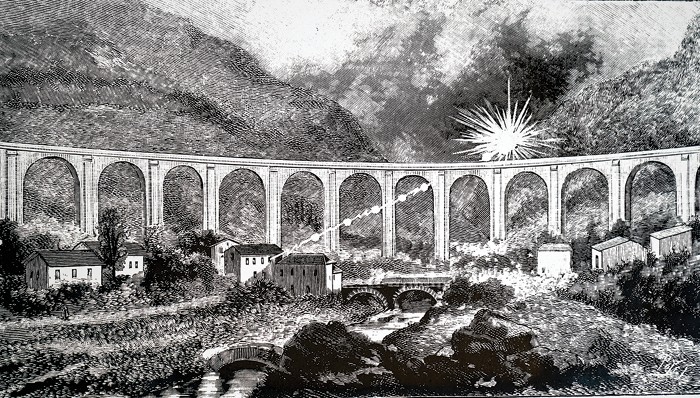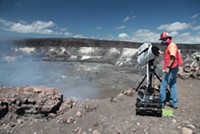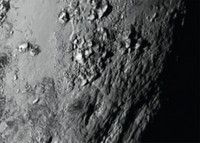Advertisement
Grab your lab coat. Let's get started
Welcome!
Welcome!
Create an account below to get 6 C&EN articles per month, receive newsletters and more - all free.
It seems this is your first time logging in online. Please enter the following information to continue.
As an ACS member you automatically get access to this site. All we need is few more details to create your reading experience.
Not you? Sign in with a different account.
Not you? Sign in with a different account.
ERROR 1
ERROR 1
ERROR 2
ERROR 2
ERROR 2
ERROR 2
ERROR 2
Password and Confirm password must match.
If you have an ACS member number, please enter it here so we can link this account to your membership. (optional)
ERROR 2
ACS values your privacy. By submitting your information, you are gaining access to C&EN and subscribing to our weekly newsletter. We use the information you provide to make your reading experience better, and we will never sell your data to third party members.
Atmospheric Chemistry
What is ball lightning, a reality or myth?
The mysterious phenomenon has been reported for centuries. Are scientists any closer to figuring it out?
by Fionna Samuels
April 15, 2024
| A version of this story appeared in
Volume 102, Issue 12

A flash of lightning. A thundering boom. And then a curious light floating through the air, illuminating the dark room, and bouncing off surfaces. “I was so terrified, I hid under my blanket,” says Millie Drozda, my grandmother, “as if that would do anything.” It was thirty-odd years ago, and she was more than 20 floors up in her Chicago apartment when she witnessed a deeply mysterious yet well-documented phenomenon: ball lightning.
People have been swapping stories about ball lightning for hundreds of years. An illuminated manuscript written by an English monk in 1195 may be the oldest report. It describes a “sort-of fiery globe” descending from a storm cloud and falling into the river Thames (Weather 2022, DOI: 10.1002/wea.4144). Nearly 600 years later, scientist Georg Richmann was killed inside his Saint Petersburg lab by “a Globe of blue and whitish Fire” that struck his head while he demonstrated a lightning-probing experiment to an engraver from the Imperial Academy of Sciences and Arts in Saint Petersburg.
In more recent years, pilots flying through both clear and stormy weather have reported watching flickering balls of light appear in the cockpit and then meander down the inside of the plane (J. Atmos. Sol.-Terr. Phys. 2021, DOI: 10.1016/j.jastp.2021.105758). A quick web search will find people in every corner of the internet telling their own ball lightning stories.
“There’s a consistent core of information that people from all over the world report,” says Karl Stephan, an engineering professor at Texas State University who has been investigating ball lightning for decades. Most often, people see ball lightning when a storm rages nearby, though Stephan says folks rarely see it form. Instead, people simply notice a strange, roughly spherical white, yellow, red, or blue light drift into their vision. From there, it may drift out of sight, wink out, or explode. “The key things are that it lasts more than a second,” Stephan says, “and it’s not clear where the energy is coming from to make the illumination.”
These qualities make ball lightning a riddle for scientists, one that some are keen to solve.
“If ball lightning was easy to make, we would have made it,” says Martin Uman, emeritus distinguished professor of electrical and computer engineering at the University of Florida. Uman directed the University of Florida’s International Center for Lightning Research and Testing from 1994 until the closure of its triggered lightning facility in 2022. When the center was active, he and his colleagues shot rockets carrying long lines of wire into storm clouds. If conditions were right, the scientists could trigger a lightning strike and study its properties.
“Ball lightning is often seen by observers right after a lightning strike,” Uman says, so some scientists theorize that the phenomenon is created by the material that a bolt strikes. The question Uman’s team aimed to answer: What substance generates ball lightning?
When Uman received funding from the US Air Force specifically to create ball lightning, he saw it as the perfect opportunity to hit a plethora of materials with triggered lightning strikes. Members of his team put out a call asking for test suggestions from every lightning researcher they knew. Over the course of several experiments, the team triggered eight lightning bolts, which struck a tower that was stacked with materials such as silicon wafers and powder, a freshly cut pine tree, a pool of water, and various metal sheets. The researchers even included bat guano in their experiments “for no reason except we had some lying around.”

Of the 100 or so materials that were struck by lightning, only four responded in a way that looked like ball lightning. A flame appeared above a kiddie pool filled with salt water; a shower of glowing particles erupted from two silicon wafers; a soft, persistent glow rose from a pine stump mounted in salt water; and a well-defined, persistent glow hovered a few inches above a wet sheet of stainless steel (J. Atmos. Sol.-Terr. Phys. 2010, DOI: 10.1016/j.jastp.2010.04.009).
Of these four observations, the ball that appeared over the metal sheet looked the most like ball lightning, Uman says. Even so, it wasn’t quite right. Although the ball did fully separate from the steel plate, it hovered there for only a couple hundred milliseconds before falling apart into smaller pieces and disappearing. “That might have been on the right track,” Uman says, “Maybe if we had more money and more time, we would have struck 100 pieces of wet steel with different kinds of lightning, and one of them would have made ball lightning. Who knows?”
Plasma is a state of matter in which atoms or molecules are excited to the point that some of their electrons are stripped away. Collisions within the resulting mixture of excited ions and neutral particles, and between the plasma and surrounding gases, release energy in the form of photons. This emission gives plasmas their characteristic glow, the color of which depends on the chemical species present.

To create a plasma ball, Fantz runs an experiment seemingly inverse to Uman’s triggered lightning. Rather than inciting an electrical discharge like a lightning strike from above a watery surface, she sets up a submerged electrode to spark just below the water’s surface. She discharges a current up of to 100 A—“not recommended to be done at home,” she says with a laugh—which rapidly evaporates and excites a small amount of salt water into a plasma state. When the current is cut off, the plasma rises from the water’s surface and forms a ball (IEEE Trans. Plasma Sci. 2014, DOI: 10.1109/TPS.2014.2310128).
“You see a phenomenon that has similarities to what is reported about ball lightning,” Fantz says. Specifically, the size and color of the plasma are similar to those of ball lightning. Fantz says her group used spectroscopic analysis to determine that the yellow color that they often observe arises from the sodium chloride in the water. The white light that they simultaneously observe comes from radicals generated from water (J. Phys. D: Appl. Phys. 2020, DOI: 10.1088/1361-6463/abc918). Changing the type of salt or its concentration changes the ball’s color, she says.
What the researchers do not see is the ball hovering or moving laterally like a ball lightning. Instead, it rises like any hot plasma and swirls into a loop as it loses its energy, indicating that a vortex forms within the center. Like all plasmas, Fantz’s plasma balls are unable to pass through a piece of paper unless there is a hole to squeeze through, counter to reports of ball lightning traveling through solid walls.
The lifetime of the plasma balls is what really fascinates Fantz. They persist for about half a second before disappearing: a much shorter existence than what is reported for ball lightning but orders of magnitude longer than what is expected for a plasma, she says. She and her students attribute the long lifetime to ongoing chemical reactions within the plasma balls.
Although her experiments lend credence to the idea that balls of plasma can form in lab settings, Fantz says they do not prove the existence of ball lightning. Lightning striking a natural body of water is a natural parallel of her experiment, but she points out that the energy from such a strike would dissipate across the surface of the water rather than concentrate in a single spot. She also questions the reliability of anecdotal evidence. For Fantz, she’ll need to see a reproducible and explainable experiment before she embraces ball lightning as anything more than the Loch Ness monster of lightning phenomena.
“Eyewitness accounts are notoriously inaccurate, but they’re not totally useless,” says Walt Lyons, former president of the American Meteorological Society. He points to another historically dismissed weather phenomenon: red sprites (Weatherwise 2022, DOI: 10.1080/00431672.2022.2116249). These ethereal lights, which look red from nitrogen emission, flash in the mesosphere and stratosphere above storms when powerful positive lightning bolts strike Earth.
For more than a century, people reported sightings of sparks above thunderstorms, but the reports weren’t taken seriously. Then, in 1989, a trio of researchers testing a new low-light video camera accidentally captured an image of lights above a distant storm. One of the scientists contacted Lyons, who at that time was running a lightning-detection network at the University of Minnesota, to find out whether he could explain the phenomenon. Lyons correlated the video still to a powerful storm and soon went out in search of red sprites himself. On his first night out, Lyons says he caught 250 red sprites on camera—they’re surprisingly common.
Whether ball lightning will ever be captured reliably on camera remains to be seen, but Texas State’s Stephan hopes that by collecting anecdotes he can piece together the kinds of conditions required to create ball lightning. To this end, he and a colleague launched an online form in 2020 to collect reports from citizen scientists (J. Atmos. Sol.-Terr. Phys. 2022, DOI: 10.1016/j.jastp.2022.105953). “We’ve gotten about 800,” he says. “I’m not saying all of them are ball lightning, but certainly a good fraction of them are.”
Until there’s definitive evidence of ball lightning either gathered experimentally or caught on camera, Stephan is content to be a skeptical believer and “wet blanket” when it comes to theories and experiments designed to explain the phenomenon. He recently read a preprint in which the authors hypothesize that ball lightning might be some kind of wormhole. “I don’t put a lot of credibility in that theory,” he says. “But it does have that one attractive feature: that if the other end of the wormhole can go anywhere it wants, it might as well show up in somebody’s bedroom.”





Join the conversation
Contact the reporter
Submit a Letter to the Editor for publication
Engage with us on Twitter